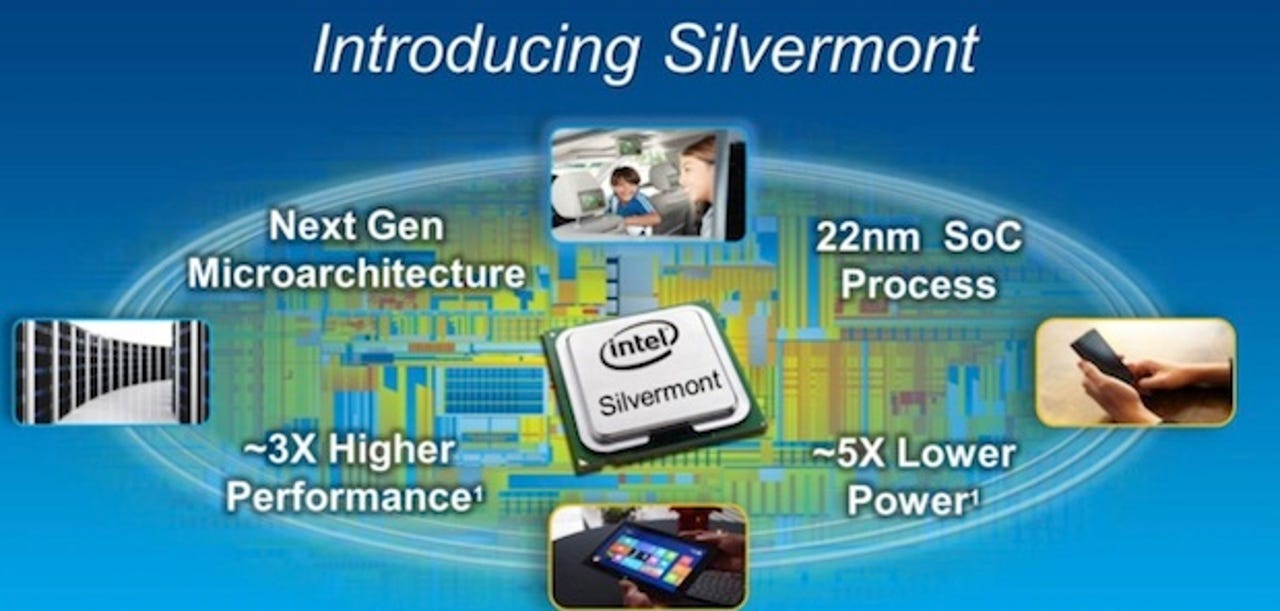Intel unveils low-power SoC architecture: Silvermont


Intel has some ambitions plans in mind with the introduction of Silvermont, the next generation of the tech giant's microarchitecture platform.
The San Jose-based corporation is particularly emphasizing the lower power consumption rates attached to Silvermont.
See also: Intel Iris could be a real threat to AMD and Nvidia
Intel touts that the 22-nanometer System-on-a-Chip platform offers three times more performance for five times less power than the current Atom core generation.
Some of the key enhancements include power sharing between GPUs and SoC IPs along with being able to manage burst frequency based on thermal, electrical, and power delivery constraints.
With a multi-core system fabric supporting to eight cores, Intel boasts that this SoC offers more scalability across its range of product and market segments.
Specifically, Intel cited intelligent systems, datacenters, Ultrabooks, and mobile devices (both smartphones and tablets).
Thus, the chip maker could be hoping to use Silvermont to strengthen its mobile strategy, which has somewhat fallen to the sidelines.
Silvermont is scheduled to be the first in a family of cores that will be refreshed every year for the next few years.
It's been a busy time for the microprocessor giant. Just last week, Intel finally announced who would be taking over the reins from outgoing CEO Paul Otellini.
Intel revealed on Thursday that Brian Krzanich would be stepping up to the plate as the company's sixth CEO, effective May 16.
Big processor news is also still on the horizon as Intel counts down (by the nanosecond) to the debut of its fourth-generation Core processor family, formerly referred to by the codename "Haswell."
That platform, expected to support an "extraordinarily long battery life" will be introduced at Computex in Taiwan on June 4.
Screenshots via Intel Investor Relations